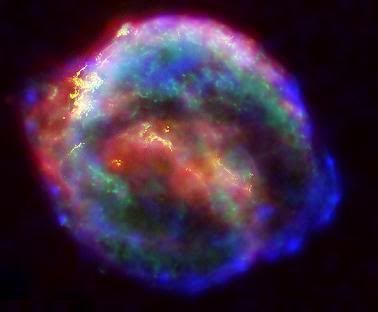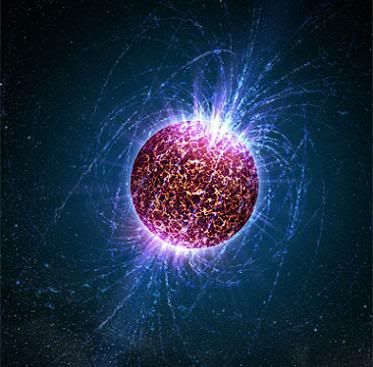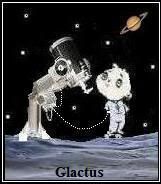Post by glactus on Oct 8, 2011 4:26:06 GMT
Stellar evolution is the process by which a star undergoes a sequence of radical changes during its lifetime. Depending on the mass of the star, this lifetime ranges from only a few million years for the most massive, to trillions of years for the least massive, which is considerably more than the age of the universe.

The evolution of a star
Stellar evolution is not studied by observing the life of a single star, as most stellar changes occur too slowly to be detected, even over many centuries. Instead, astrophysicists come to understand how stars evolve by observing numerous stars at the various points in their life, and by simulating stellar structure with computer models

A Supernova
Stellar evolution begins with the gravitational collapse of a giant molecular cloud (GMC). Typical GMCs are roughly 100 light-years across and contain up to 6,000,000 solar masses. As it collapses, a GMC breaks into smaller and smaller pieces. In each of these fragments, the collapsing gas releases gravitational potential energy as heat. As its temperature and pressure increase, a fragment condenses into a rotating sphere of superhot gas known as a protostar.

A Neutron star
A new star will fall at a specific point on the main sequence of the Hertzsprung-Russell diagram, with the main sequence spectral type depending upon the mass of the star. Small, relatively cold, low mass red dwarfs burn hydrogen slowly and will remain on the main sequence for hundreds of billions of years, while massive, hot supergiants will leave the main sequence after just a few million years.
A mid-sized star like the Sun will remain on the main sequence for about 10 billion years. The Sun is thought to be in the middle of its lifespan; thus, it is on the main sequence.
To see video of Stellar evolution just click on the link below. Has sound.
www.youtube.com/watch?v=_6JnZjwXs68

Credits: These are non copywrite images
Text by Wikipedia
Video by YouTube

The evolution of a star
Stellar evolution is not studied by observing the life of a single star, as most stellar changes occur too slowly to be detected, even over many centuries. Instead, astrophysicists come to understand how stars evolve by observing numerous stars at the various points in their life, and by simulating stellar structure with computer models

A Supernova
Stellar evolution begins with the gravitational collapse of a giant molecular cloud (GMC). Typical GMCs are roughly 100 light-years across and contain up to 6,000,000 solar masses. As it collapses, a GMC breaks into smaller and smaller pieces. In each of these fragments, the collapsing gas releases gravitational potential energy as heat. As its temperature and pressure increase, a fragment condenses into a rotating sphere of superhot gas known as a protostar.

A Neutron star
A new star will fall at a specific point on the main sequence of the Hertzsprung-Russell diagram, with the main sequence spectral type depending upon the mass of the star. Small, relatively cold, low mass red dwarfs burn hydrogen slowly and will remain on the main sequence for hundreds of billions of years, while massive, hot supergiants will leave the main sequence after just a few million years.
A mid-sized star like the Sun will remain on the main sequence for about 10 billion years. The Sun is thought to be in the middle of its lifespan; thus, it is on the main sequence.
To see video of Stellar evolution just click on the link below. Has sound.
www.youtube.com/watch?v=_6JnZjwXs68
Credits: These are non copywrite images
Text by Wikipedia
Video by YouTube


